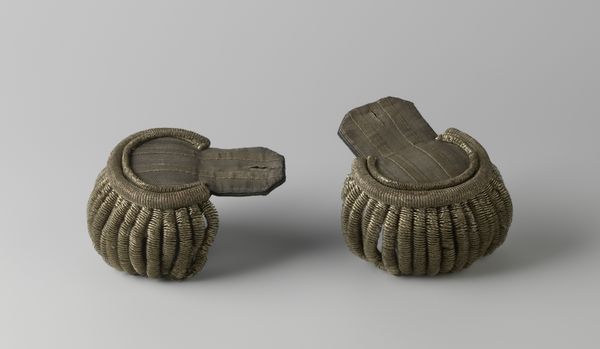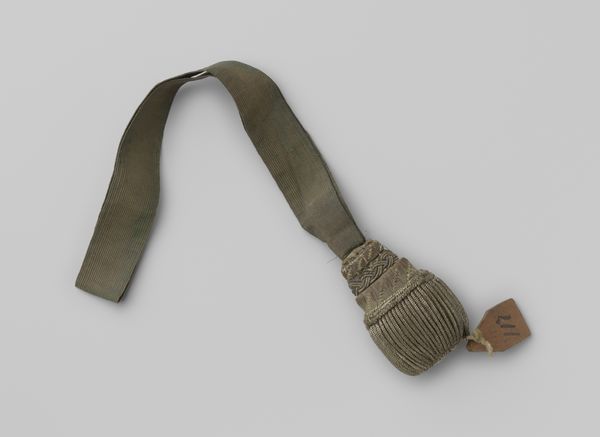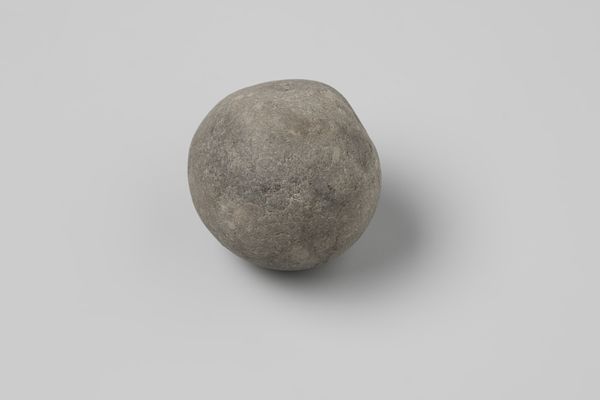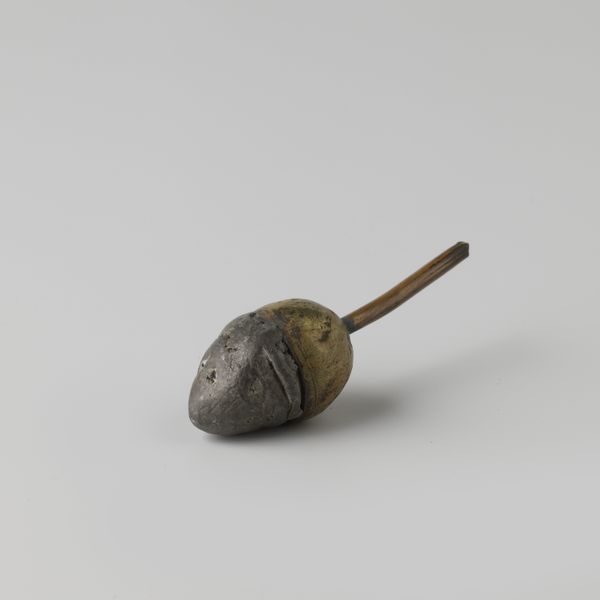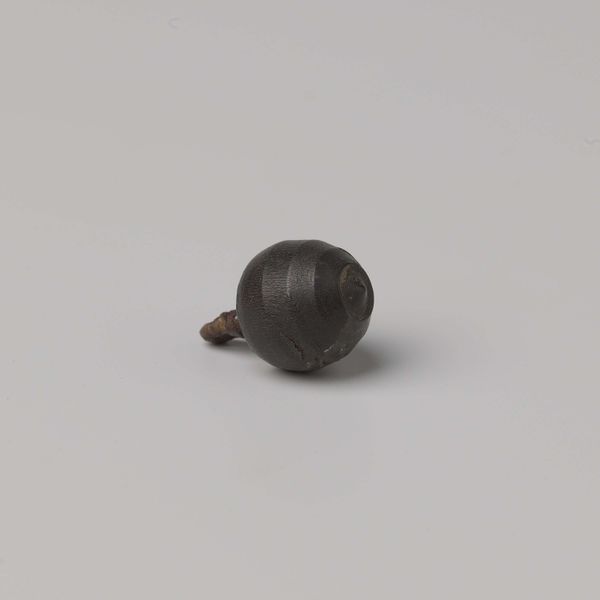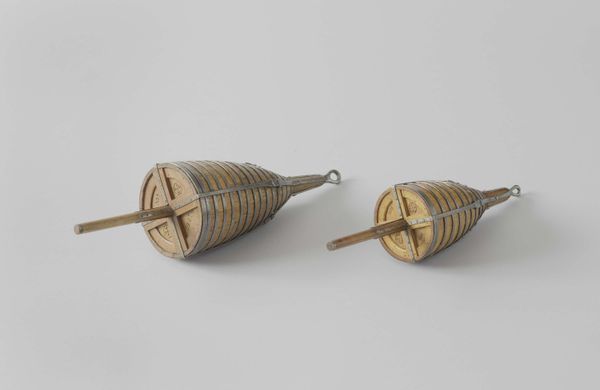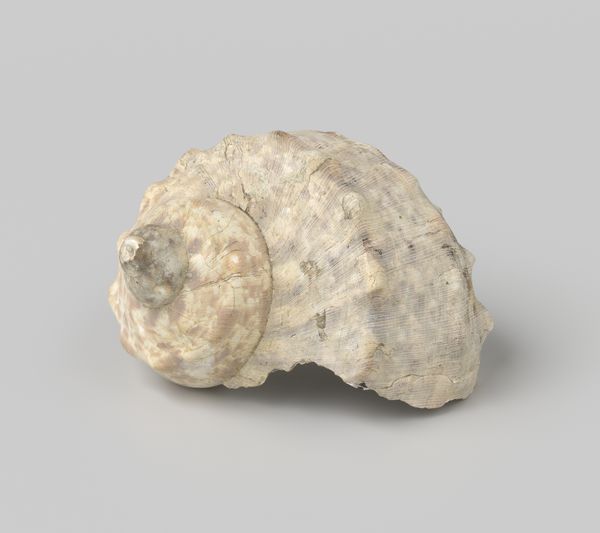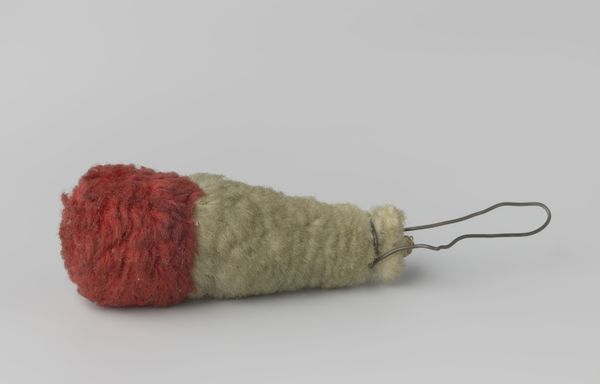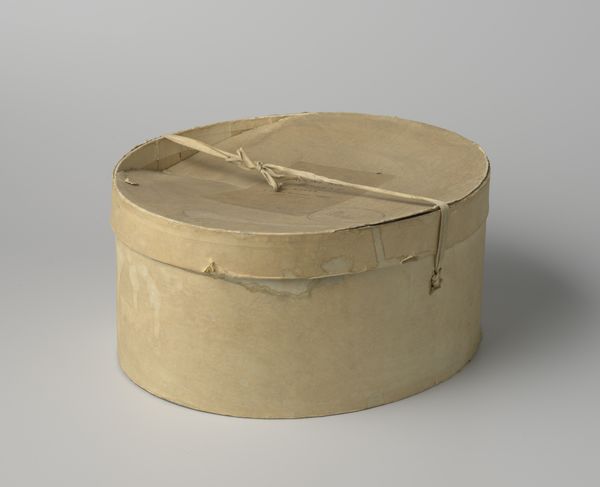
mixed-media, assemblage, metal, found-object
#
mixed-media
#
assemblage
#
metal
#
found-object
Dimensions: width 34.5 cm, height 5 cm, depth 25.5 cm, height 13 cm, diameter 5 cm
Copyright: Rijks Museum: Open Domain
Curator: Well, this curious object is entitled “Ball bij sjako van J.W.C. baron van Ittersum.” It appears to date from around 1800 to 1850. The composition incorporates metal and what appears to be various found objects in a mixed media assemblage. Editor: My first thought is the material feels muted, subdued even. Its textures, almost fragmented, hint at a hidden purpose or past. Curator: It certainly begs inquiry, doesn’t it? To put it in context, these decorative balls, which would have been displayed on the military caps – shakos – were more than mere ornament. They represented social standing and often the patriotic fervor of the wearer during the tumultuous years following the Napoleonic wars. They indicated rank and social class at the time. Editor: I’m interested in that concept of the social and patriotic role these seemingly simple objects played, specifically through this baron's identity and privileges in shaping narratives around war, power, and representation in a rapidly changing Europe. Does it express those nationalistic values, or subtly undermine them? Curator: The materiality, however, raises some questions. It seems intentionally aged, or distressed. The use of these various materials suggests an interest in disrupting typical modes of display and, more widely, institutional frameworks prevalent in artistic expression. Editor: It’s an intriguing contrast, right? Juxtaposing what could be seen as symbols of status and nationalistic pride against the backdrop of potential social commentary. It evokes dialogues around class, military structures, and even perhaps questions inherited privilege through its creation as a somewhat deconstructed object. Curator: Exactly. The artist is taking elements loaded with socio-political significance and prompting us to consider their deeper implications within the era and, perhaps, the ages that would follow. It asks a big question, no? Editor: Absolutely. I see how interrogating power and visual vocabulary is deeply tied to discussions around historical and contemporary class relations and identities, compelling reflection beyond initial aesthetic assessment. Curator: Ultimately, the artwork functions as more than just an emblem from the past. Editor: Instead it’s more of a silent but strong prompt encouraging broader investigations into the complicated interaction of symbols, materials, identity, and culture.
Comments
No comments
Be the first to comment and join the conversation on the ultimate creative platform.


